Author: CH_Chenhan
In the winter, the endurance of electric vehicles has become the focus of public opinion again. Due to the characteristics of lithium batteries and the impact of heating energy consumption, it is an indisputable fact that the low-temperature endurance of electric vehicles is poor.
However, not all electric vehicles will experience a sharp drop in endurance in winter, and there are ways to achieve higher mileage in winter.
For example, the BYD Dolphin we drove has a range of 405km according to the Ministry of Industry and Information Technology (MIIT). In the environment of 5℃ to -13℃ in Beijing, we drove 390km of actual range, and the car did not have to park.
Test rules and routes
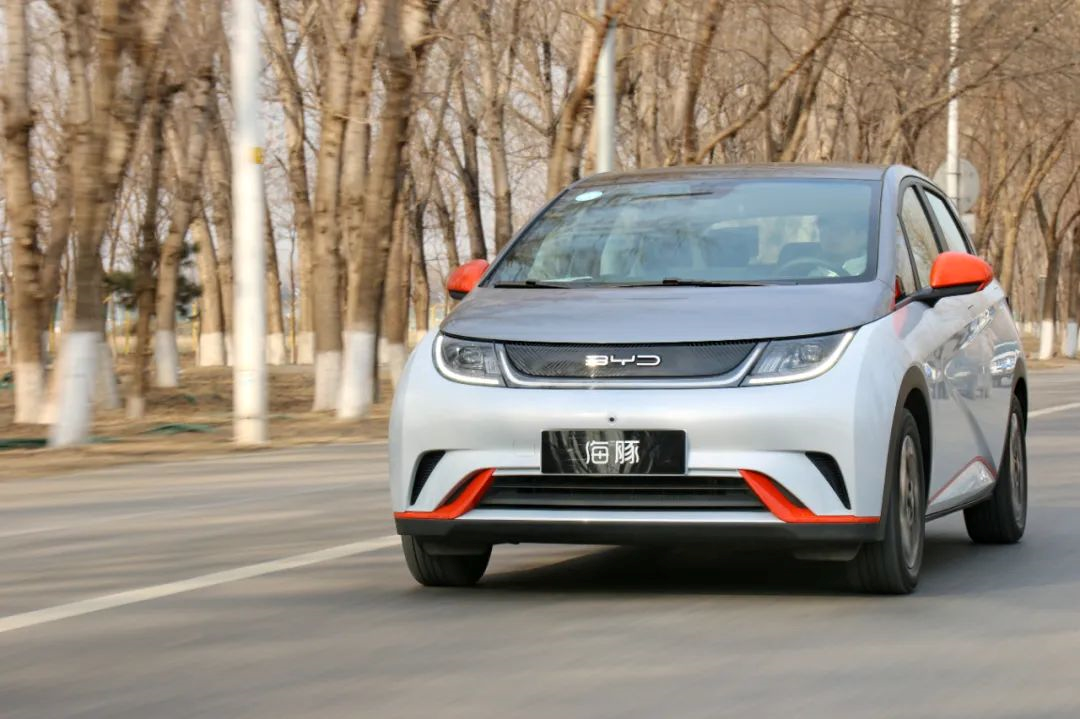
It should be noted that the actual 390km range was measured during the BYD winter endurance challenge, which was a extreme challenge to see how far the BYD Dolphin could go in the winter of Beijing.
In order to ensure fairness of the competition and the experience of participating media, BYD has established relatively strict rules for the competition:
Air conditioning and driving mode
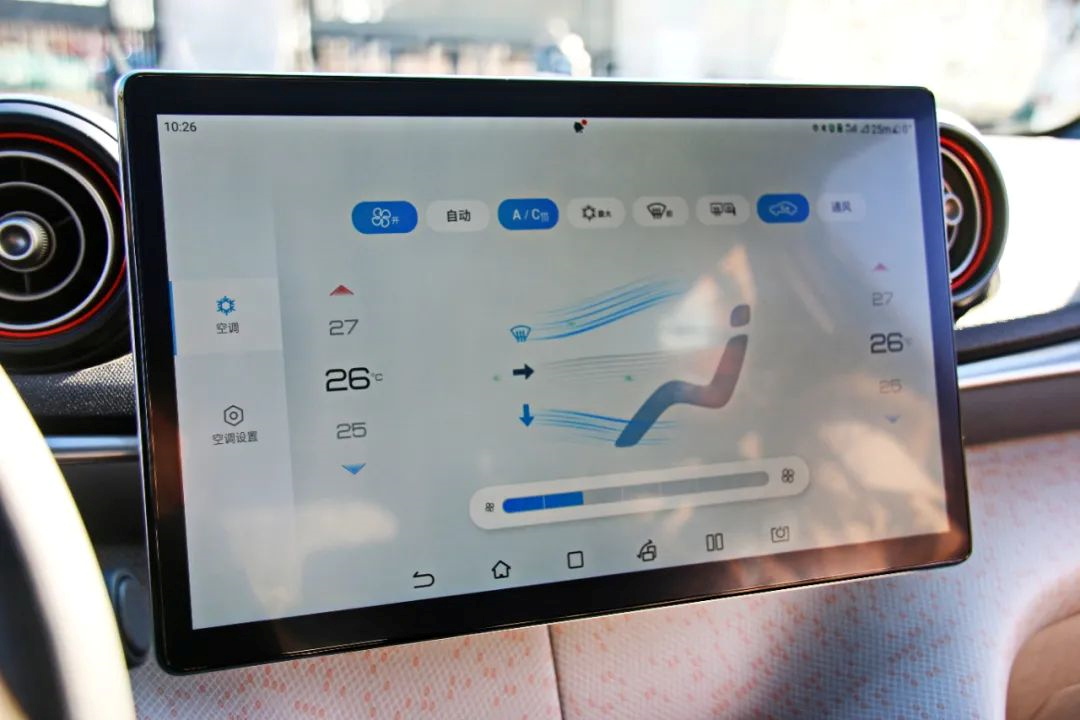
The air conditioning must be turned on and set to 26℃, with 2 gear wind and using ECO energy-saving driving mode. At this time, the air conditioning will also automatically adjust to energy-saving mode, and a slight warm air can be felt on the air conditioning outlet, which can ensure that the compartment is not cold, but it cannot be called warm.
Competition time period
10:30-18:30 on the first day and 8:30-11:30 on the second day. That is to say, except for the time of lunch on the first day, the actual driving time is only 11 hours. To drive more, you cannot drive too slowly.
Starting and ending points of the route
On the first day, it was from Jinmao Yishengyuan in Shunyi District to Shuizhen Hotel in Miyun District, then to the Hilton Ecolodge Hotel in Badaling in Yanqing District. On the second day, it was from the Hilton Ecolodge Hotel in Badaling in Yanqing District to Jinmao Yishengyuan in Shunyi District. The starting and ending points of the entire route are the same to avoid the impact of changes in altitude on endurance. During the competition, participants can choose their own route, whether it’s on the highway or in the city, or detours, but they must arrive at the destination within the specified time.
How did we drive the 390km?
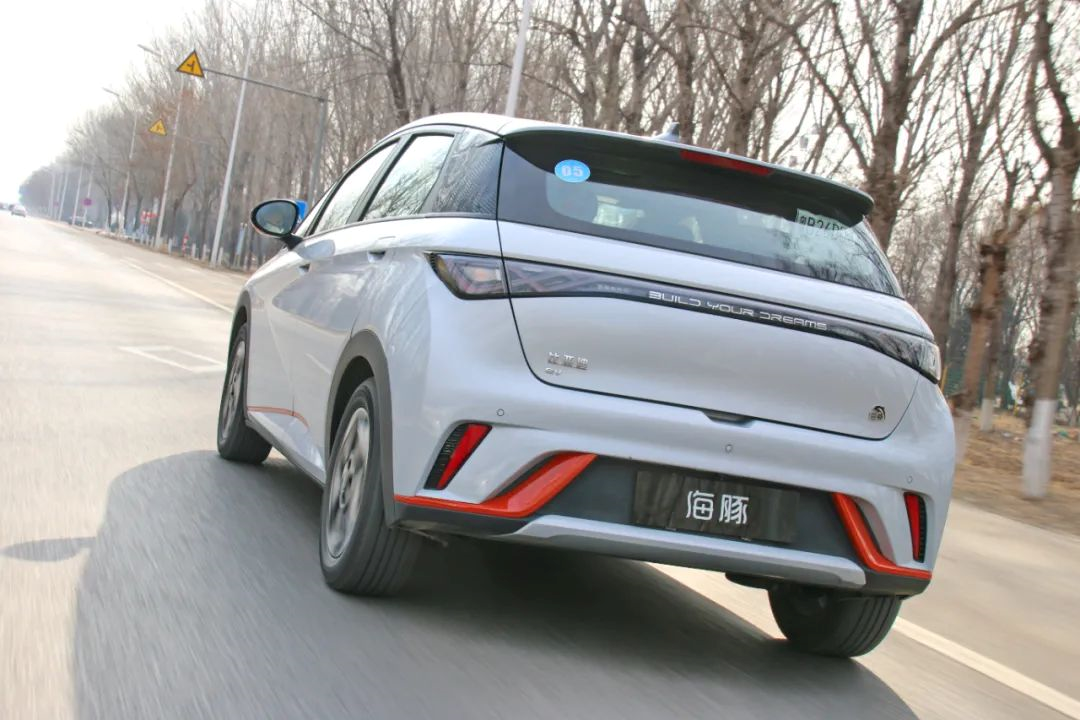 To achieve higher cruising range, we chose not to take highways throughout the journey and drove at a constant speed of 50km/h in the city. We only manually intervened during acceleration, braking, climbing steep hills, and other necessary situations, and used cruise control for the rest. Because each car had two media personnel taking turns driving, we weren’t particularly tired after driving for two days.
To achieve higher cruising range, we chose not to take highways throughout the journey and drove at a constant speed of 50km/h in the city. We only manually intervened during acceleration, braking, climbing steep hills, and other necessary situations, and used cruise control for the rest. Because each car had two media personnel taking turns driving, we weren’t particularly tired after driving for two days.
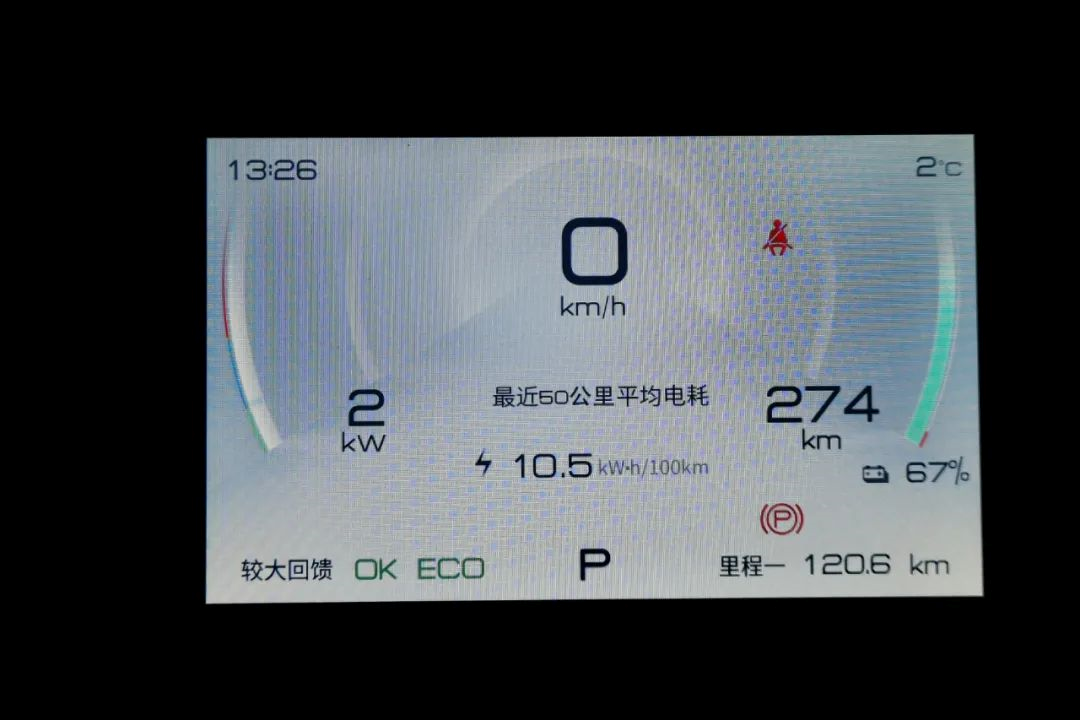
On the first morning, we drove from Shunyi District to Miyun District, mainly along a flat wide road with a temperature of -1-5℃. It was relatively pleasant overall, and by the time we arrived at the lunch stop, our displayed energy consumption was 10.5kWh/100km (only the average energy consumption of the previous 50km is shown, the same for the following). At the start of the journey, we had a displayed cruising range of 405km. After driving 120.6km, our remaining displayed cruising range was 274km. Actual cruising range / Displayed cruising range = 92.06%.
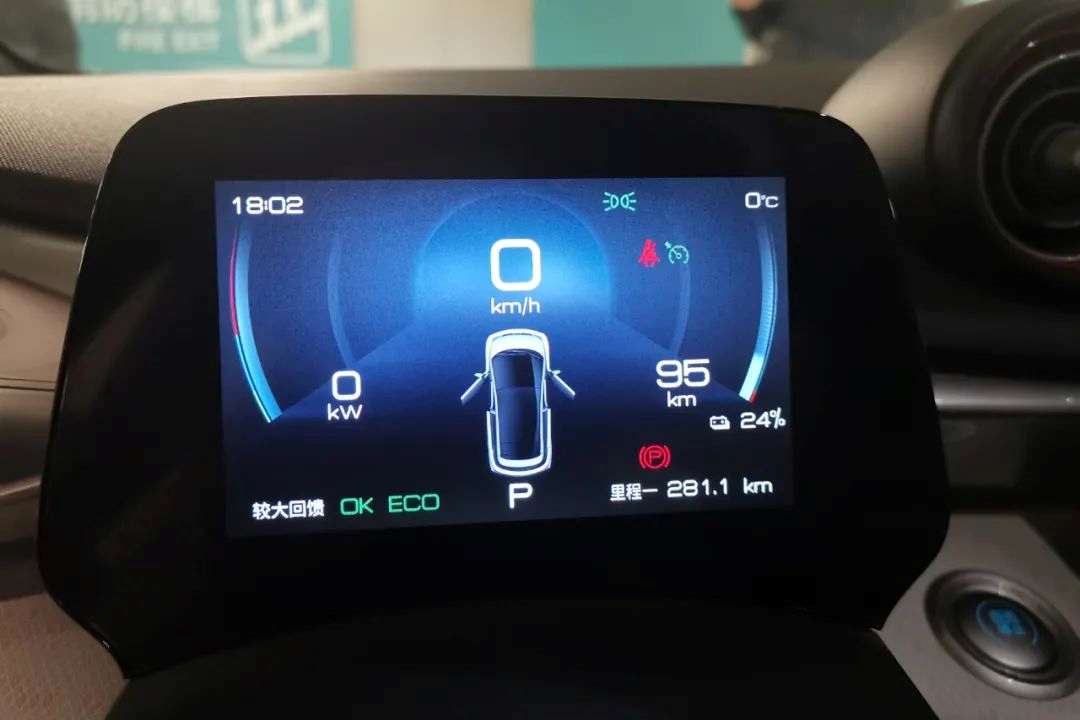
After lunch, we drove from Miyun District to Yanqing District. We drove mostly downhill for a while, bringing the displayed energy consumption down to a minimum of 7.4kWh/100km, followed by continuous steep uphill climbs. By the time we arrived, our displayed energy consumption had risen to 11.7kWh/100km. We had driven a total of 281.1km, and the remaining displayed cruising range was 95km. Actual cruising range / Displayed cruising range = 75.97%.
At this point, we were somewhat concerned because the distance back to the starting point the next day was almost 90km, but our displayed cruising range was only 95km. We were also worried that leaving the car in the hotel garage overnight would significantly reduce the displayed cruising range.
Fortunately, when we returned to the garage to retrieve the car at 8:30 am the next day, the displayed temperature was 7℃ and the displayed cruising range was still 95km.
However, the temperature dropped sharply when we left the garage, freezing the displayed cruising range by 2km. The displayed temperature quickly dropped to -13℃, and the displayed cruising range immediately dropped to 93km. Furthermore, the displayed energy consumption continued to rise, reaching a peak of about 14.5kWh/100km.
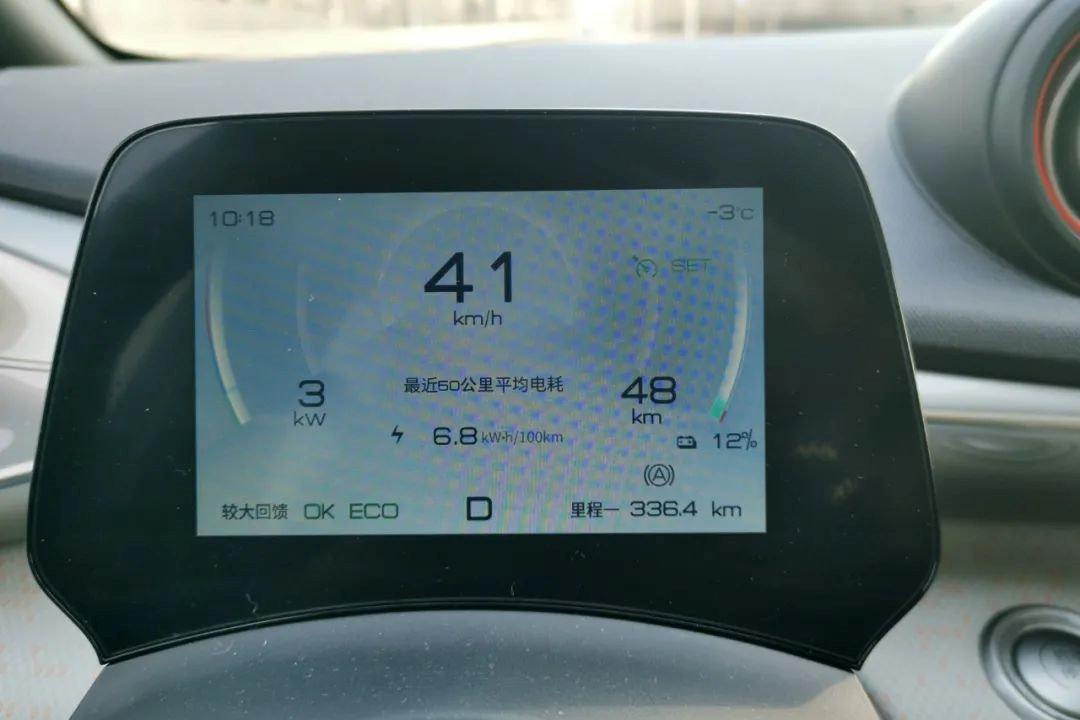 When we saw the dashboard’s estimated remaining mileage dropping faster than the actual remaining mileage, we prepared ourselves for the possibility of being stranded. However, we were surprised when the continuous downhill slopes and rising morning temperatures gave us hope again. The energy consumption on the dashboard reached its minimum at 6.4 kWh/100 km, even after retracing yesterday’s uphill route with almost no decrease in estimated remaining mileage.
When we saw the dashboard’s estimated remaining mileage dropping faster than the actual remaining mileage, we prepared ourselves for the possibility of being stranded. However, we were surprised when the continuous downhill slopes and rising morning temperatures gave us hope again. The energy consumption on the dashboard reached its minimum at 6.4 kWh/100 km, even after retracing yesterday’s uphill route with almost no decrease in estimated remaining mileage.
Later, we found out that the altitude decreased by about 500 meters from Yanqing District to Shunyi District. We drove approximately 90 km and still had more than 20 km of estimated remaining mileage when we returned to the starting point. At that time, the temperature on the dashboard was -1℃, and energy consumption was approximately 10 kWh/100 km. We had half an hour until the end of the race.
In order to maximize our remaining mileage, we increased our speed to 70 km/h and continued to circle around the hotel’s entrance. When we reached approximately 378 km, the estimated remaining mileage on the dashboard showed 0, and the power was limited with a turtle icon appearing on the dashboard. The maximum motor output power was limited to 8 kW, but we still managed to increase the speed to over 70 km/h by stepping on the accelerator.
Finally, at 11:30, when the race ended, our actual remaining mileage was 383.8 km, and the estimated remaining mileage on the dashboard was 0. We won second place in the race, which was 5 km behind the first place.
It is worth mentioning that after driving back to the hotel, our actual remaining mileage was 390.6 km. In other words, the actual remaining mileage divided by the estimated remaining mileage was 96.44%!
Therefore, it can be concluded that, in temperatures around 0℃, the BYD Dolphin can still run for about 12 km on the estimated remaining mileage of 0. Other vehicles in the race also did not run out of battery with an actual driving distance of over 350 km.
Why is the Dolphin so efficient?
Although this driving test did not recreate most people’s winter driving scenarios, it still shows that the BYD Dolphin can achieve close to the official range in winter temperatures, even without the best conditions.
So, why is the BYD Dolphin so efficient despite using LiFePO4 battery blades? The answer lies in the company’s strong expertise in Three Electric Innovations. As the first model of the BYD e-platform 3.0, the Dolphin incorporates numerous energy-saving new technologies, including a heat pump system, an eight-in-one electric powertrain, and a battery pack refrigerant cooling and heating technology.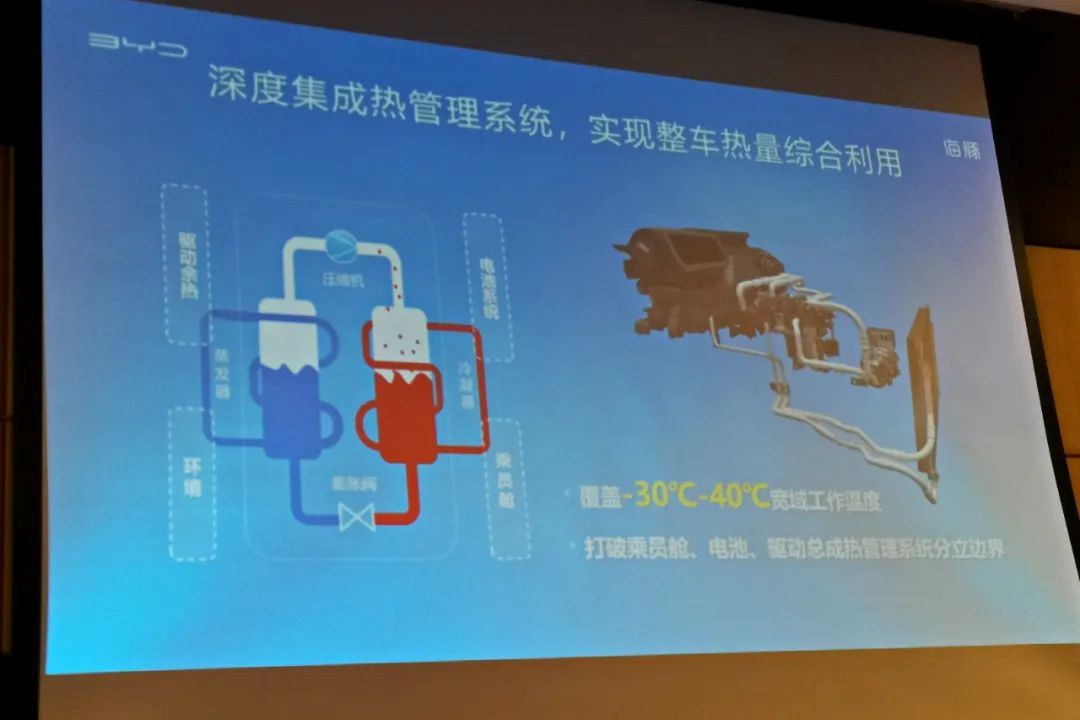
A heat pump is a device that transfers heat energy from low-temperature heat sources to high-temperature heat sources. Its working principle is based on the reverse Carnot cycle. With minimal electrical energy, it absorbs a large amount of low-temperature heat energy from the air and compresses it into high-temperature heat energy through a compressor. It is then transmitted through a medium such as water or refrigerant. Simply put, when used on a car, the heat pump transfers heat from the external air or the heat generated by the powertrain to the battery or the car cabin.
The Dolphin series’ wide-temperature and high-efficiency heat pump system is standard on all models and can operate in a wide temperature range of -30°C to -40°C. It can effectively regulate the temperature of the battery pack and adjust the temperature of the passenger cabin as needed with low energy consumption. The heat pump system can absorb waste heat from the electric powertrain. Compared with the PTC heating devices used in traditional electric vehicles, the temperature control speed of the heat pump system is faster, and the vehicle’s winter driving range can be increased by 20%.
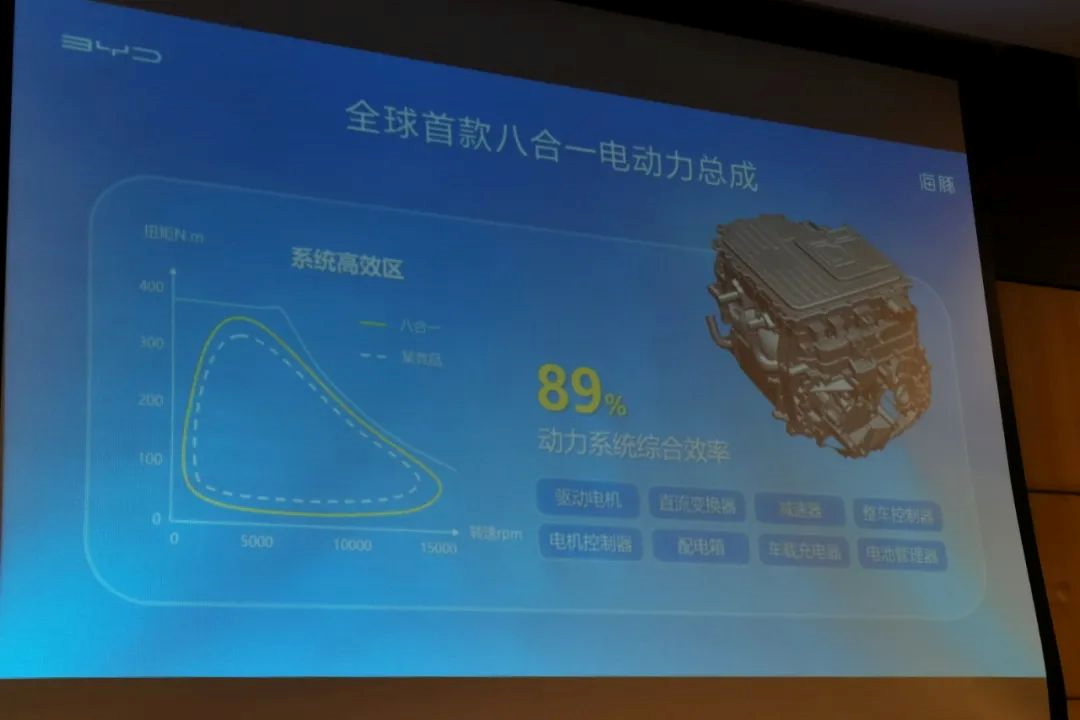
The Dolphin is equipped with an eight-in-one electric powertrain that integrates a driving motor, transmission, driving motor controller, vehicle controller (VCU), battery management system (BMS), high and low voltage DC converter (DC-DC), bidirectional on-board charger (Bi-OBC), and high-voltage distribution module (PDU). The power density has been increased by 20%, and the weight and volume have been reduced by 10%. The system’s overall efficiency is as high as 89%. The eight-in-one electric powertrain features multi-mode heat compensation technology. In extremely low-temperature environments, it can provide more heat to the heat pump system for battery and passenger cabin heating to increase winter driving range.
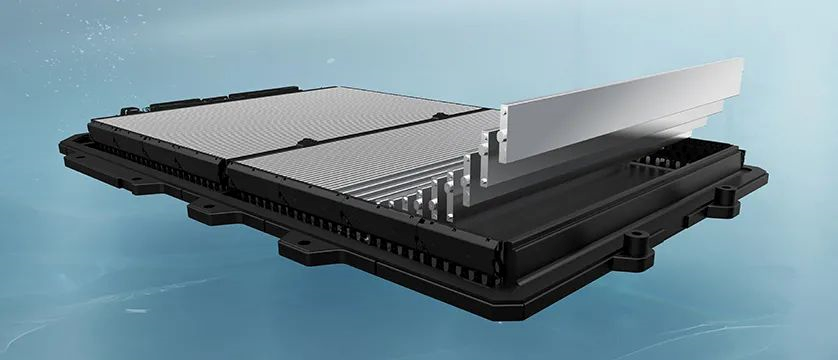
Meanwhile, the Dolphin’s blade battery uses refrigerant direct cooling and heating technology, replacing traditional cooling fluids with refrigerants that directly cool or heat the battery, reducing indirect heat transfer losses and improving the temperature consistency of the battery pack. The temperature difference within the battery is controlled within 5°C, improving the heat efficiency by 15%. This not only enhances the overall performance of the battery pack but also extends the battery’s lifespan.
In addition, the Dolphin uses a more efficient hairpin winding motor and coordinated regenerative braking system (CRBS). The motor has a maximum efficiency of 97.5%, and the kinetic energy recovery efficiency can reach 90%. With multiple technical guarantees, Dolphin boasts leading energy consumption performance in its class, achieving a range of 405km with a 44.9kWh battery pack and a Ministry of Industry and Information Technology power consumption of only 11kWh/100km.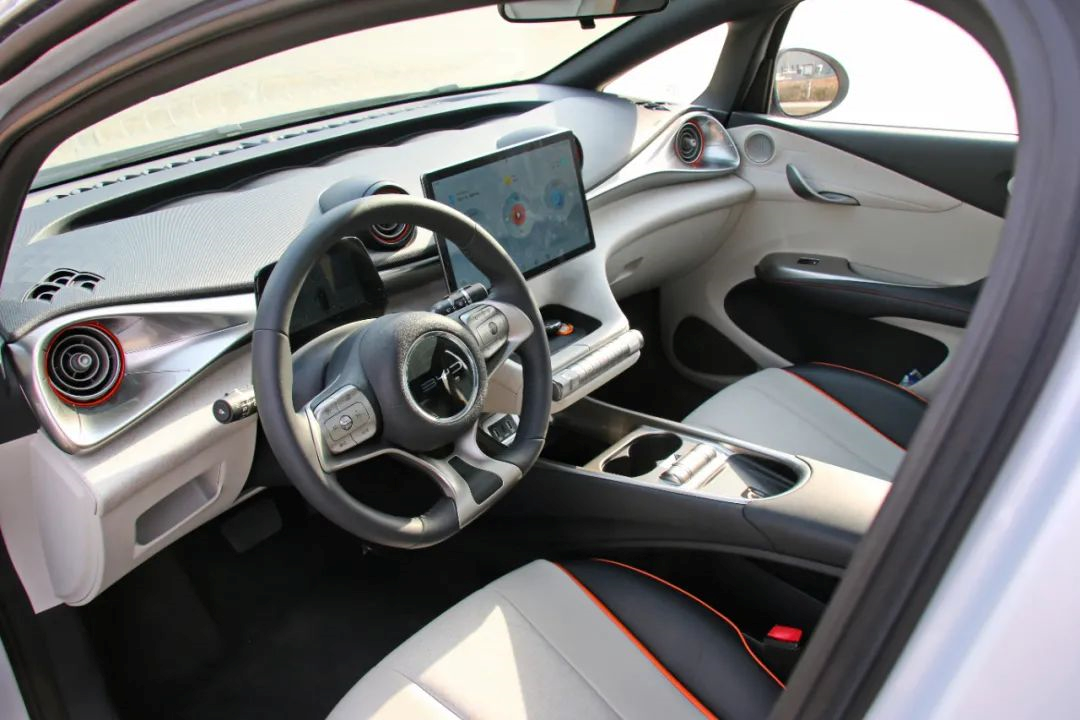
As for the actual range of Dolphin in daily driving, it is greatly influenced by each person’s driving habits, driving routes, and environmental conditions. It cannot be generalized.
Previously, in our tests in Guangzhou and Zhuhai, the average electricity consumption of Dolphin Standard and Knight versions were difficult to exceed 14kWh/100km. In other words, it can ensure a range of 300km in daily use in Guangdong.
As for the northern regions, if there are convenient charging conditions near home or work, buying a Dolphin for urban use is still very reliable. Its appearance, practicality, intelligence, and other attributes are all good, and it can be registered with green license plates nationwide, free of purchase tax. Even if you turn on the heater and drive aggressively, the range can be reduced by 50%, it is still able to travel 200km, which is enough for daily commuting.
The use experience of electric vehicles is closely related to the convenience of charging. They can still be driven in severe cold conditions, but better charging conditions and more sufficient reasons for purchase are needed.
No car can be suitable for everyone, whether it is a gasoline car or an electric vehicle. Therefore, the debate on whether electric vehicles can be driven in northern China in winter will never have a result on the internet. Should you choose an electric vehicle or a gasoline vehicle? Everyone should have their own answer.
This article is a translation by ChatGPT of a Chinese report from 42HOW. If you have any questions about it, please email bd@42how.com.
